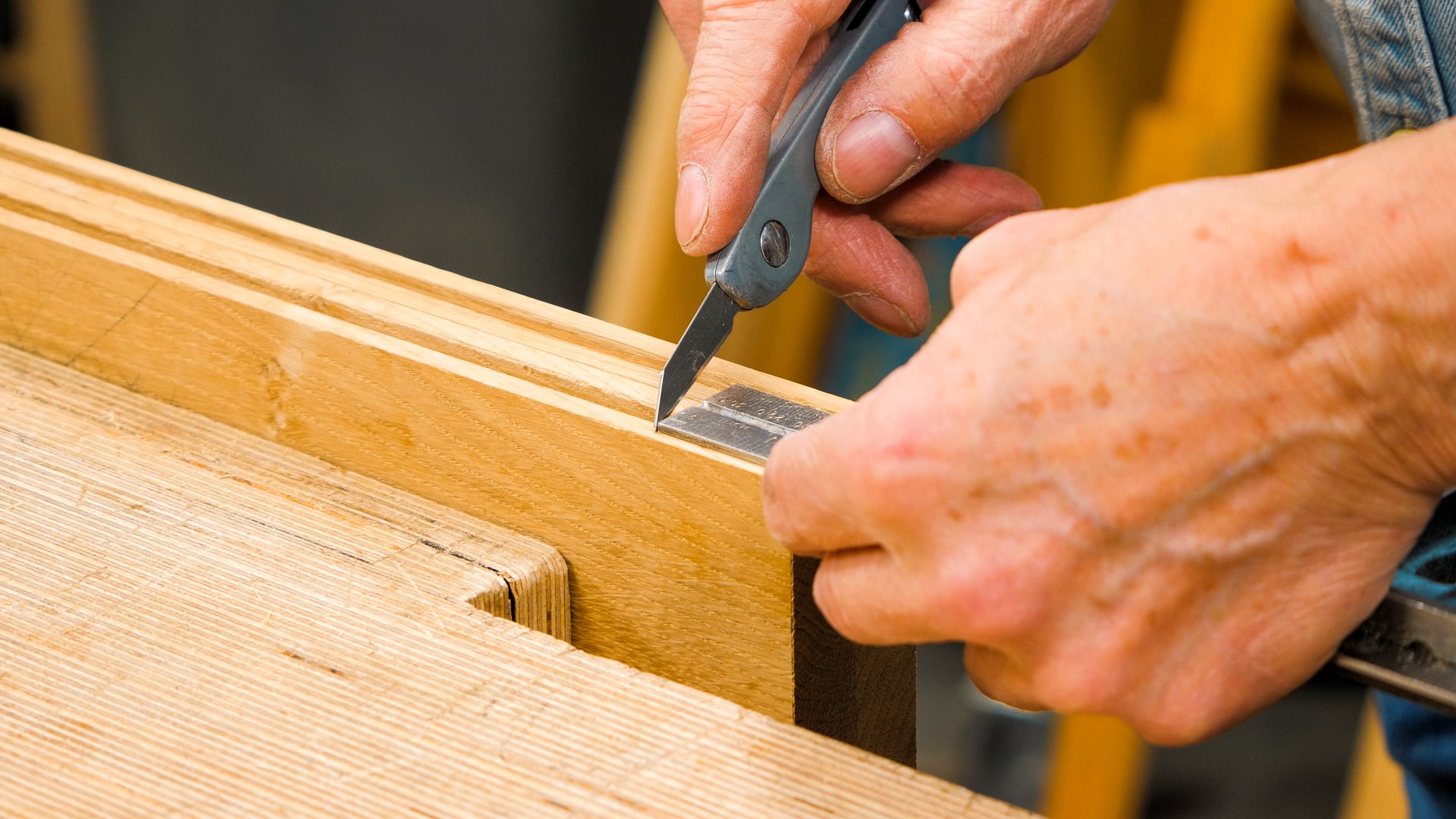Sellers Home Bedside Cabinet: Episode 2
Posted 15 March 2023
This is an episode in a paid series. Want to watch it? You just need to sign up as a paid member, and you can enjoy this video and many other videos we think you will love.
The importance of twist-free stock is ever present in frame joinery, but equally so is twist-free joinery, because a twist in a short tenon can throw the whole frame out and then the superstructure too. We’ll follow proven patterns laid down decades and centuries ago, and which remain unchanged in hand tool woodworking; and then there are the trade secrets, old and new. Paul always tries to ensure that such secrets continue into the lives of new woodworkers, and they are packed throughout this episode on preparation, layout, forming joinery, ploughing grooves, and more.


Just to be clear, I would never ever cut a tenon too thin nor even know anyone who would. However, in the unlikely hypothetical event that a friend of a friend once knew someone who did, what would you say about about them were they to merely laminate a thin layer of wood to the tenon cheek and then pretend like nothing ever happened?
I’d say that unless it was a through or wedged tenon, who would know. I have done the same thing myself. I did make sure to get the tenon thin enough that when the extra was glued on, you have enough to pare down to the correct thickness without hitting the join line. If it is just a tiny bit too small, then a couple of thick plane shavings would also do the trick.
This is perfectly fine. If the tenon and shim surfaces are true, you don’t need to worry about glue strength, but one thing to consider is whether the tenon is too thin. A tenon has strength against pullout as well as strength against twisting. Being thin weakens the tenon against some types of twisting. If the tenon is a little thin, it won’t be weakened enough to matter usually. But if you take off too much to get a good glue surface, if the shoulder line was (were) cut a too far, or it’s a thin piece start with etc., you may have to make a new piece because adding a shim will not restore the twisting strength. Other than that, I’d expect pullout strength to be equal with or without a good shim.
What is the purpose of that elongated, lozenge shaped hole on the back of Paul’s wooden router plane? I cannot figure out for what that hole might be used. I’ve considered that it may just be a neat way of removing a defect in the piece of wood, but it seems so perfectly centered under the adjustment mechanism that it looks intentionally cut.
Derek, if for some reason you need to reverse the router iron so it faces the other way (say, an obstruction on the workpiece), the base being out of the way makes it possible.
Hello,
I really would like to see a plan for this Bedside Cabinet. Is such a plan available by any chance?
Thank you,
Jan